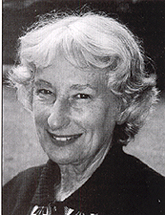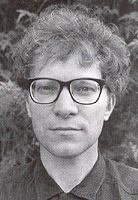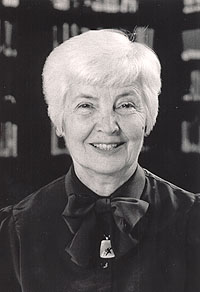Seven Ways to Nourish the Soul
Originally printed in the November - December 2004 issue of Quest magazine.
Citation:Champion, Beverley. "Seven Ways to Nourish the Soul." Quest 92.6 (NOVEMBER - DECEMBER 2004):204-207
By Beverley Champion
 What is the soul? We all feel we have one, but because we cannot see it, the concept seems a bit vague. We can still explore ways to learn more about the soul's needs and how to provide for those needs in our everyday lives. At the soul level we are fully alive, we aspire to understand our divine potential, and the experiences of our lives are sifted. But in this twenty-first century are we so bogged down with "achieving" that we are missing all the magic around us? Are we actually enjoying this incarnation?
What is the soul? We all feel we have one, but because we cannot see it, the concept seems a bit vague. We can still explore ways to learn more about the soul's needs and how to provide for those needs in our everyday lives. At the soul level we are fully alive, we aspire to understand our divine potential, and the experiences of our lives are sifted. But in this twenty-first century are we so bogged down with "achieving" that we are missing all the magic around us? Are we actually enjoying this incarnation?
Taking time on the human journey to discover our divine potential can be life's most exciting and fulfilling experience. Taking time to discover who we are and to consciously seek and experience our true essence can be one of the most incredible journeys we ever take, because our life and the way we live it is our contribution to the universe.
In exploring ways to nourish the soul, we can discover the vast difference between the experience of joy and what we call pleasure. Joy arrives unbidden, bubbling up from the center of our being, and is a moment of grace. Pleasure, although there is nothing wrong with it, has to be pursued again and again in order to be experienced. Pleasure stems from desire and carries with it the potential to disappoint when the desire is not met.
What we call happiness can be illusory and also elusive. We say that happiness is our birthright. In the language of the human personality, happiness is usually the word we use to express the fulfillment of our desire to have our circumstances just as we want them to be. Yet our personal desires cause separation from the whole—they separate us from our oneness with the whole of life—and we become "unhappy" when our personal desires are not met. At the soul level, the word happiness is probably best replaced by deep contentment, meaning contentment with what is.
In an article entitled "Our Character: Ownership in Full," author Vonda Urban writes:
All sentient life is a scintillating burst of color that dances throughout the Cosmic Spheres while singing a Song Celestial. Each individual center of consciousness is a prismatic sparkling somewhere within the vast spectrum of infinitude; each one a luminous "Pillar of Light" streaming outward from the innermost center of its own Spiritual heart in that resplendent brilliance becomes increasingly stained with color, as it shines downward through heavier and thicker veils of matter. Thus, all unfoldment evolves through a fantasy of color and sound, the inner light of selfhood expanding forever through endless cycles of work and rest, day and night, life and death, manavantara and pralaya.
Somewhere along the way, we learn at last that living is an art, and each of us an artist eternally mixing, matching, and changing the tones and colorings of the fire and music in our soul, fashioning it into character.
During our lifetimes, we can choose to become the skilled craftsman, inspired to use our palette of skandas in creating a masterpiece of radiant light; or we may carelessly mar our work, blotching it with harsh and muddied pigments. (p. 21)
This is a beautifully descriptive picture of the soul on its human journey. How do we nourish this marvelous and important vehicle?
Music
Music is one way to nourish the soul. Music has been described as "love drawn from a higher plane and distilled for human ears." It is vital to make time in our busy lives to listen to the kind of music to which our own souls respond. It is different for every one of us and changes from day to day. But when we feel we need some particular sort of music, it is the soul asking us to play it, because it is nourishment for the soul.
Creativity
Creative expression of any sort is another way to nourish the soul. Drawing, writing, painting, indeed crafting in any way can become a meditation. It allows our intuition to influence and guide the physical hand. Those who do create, whether by painting, drawing, or playing music, are familiar with a "switching over" as they change over from clock time to soul time. There shift in consciousness.
Listening to Others
Surprisingly, another way to nourish the soul is through listening. Truly listening to what another person is saying to us is said to be a "soul exercise." It is not easy to simply listen without wanting to interrupt. We are conditioned to wait for the other person's mouth to stop moving so that we can hop in and say what we need to say. We are expected to give some sort of intelligent response and therefore have this urge to speak. True listening is one of the greatest gifts we can give to another human being.
Appreciating Nature
Still another way of nourishing the soul is by communing with nature, taking the time to appreciate and also acknowledge the beauty all around us. It is not just about stopping to look at a wonderful view, but opening ourselves to absorb that view, to become one with the view. It is to examine with complete attention the tiniest plant, the arc of the moon, or the play of light on a pool of water. Consciously setting aside time to commune with nature is to take delight in discovering the first green leaf as a tree wakes up after its winter sleep. To commune with nature to such a degree is nourishment for the soul.
Sense of Humor
Cultivating a sense of humor is a good soul exercise. When we laugh, all the tension we feel dissipates. There is a bodily change. I use the following example to illustrate how to maintain humor in the most frustrating circumstances. As annoying as it is to get voice mail every time we call someone, we have learned to live with it. Have you ever wondered what it would be like if God decided to install voice mail? Imagine praying and hearing, "Thank you for calling heaven. For English, press one. For Spanish, press two. For all other languages, press three." After making your language selection, imagine hearing, "For requests, press one. For thanksgiving, press two. For complaints, press three. For all others, press four. I am sorry, all of our angels and saints are busy helping other sinners. However, your prayer is important to us and we will answer it in the order in which it was received. Please stay on the line."
It is important to laugh at something every day, especially in today's troubled world when it is very easy to forget to laugh. If we cannot find anything amusing to laugh at, we can always laugh at ourselves: Is it our circumstances that produce our pomposities or vice-versa?
Meditation and Prayer
Meditation and prayer are of course two of the most accepted ways of going within to nourish the soul. In his essay "Cleaning Out the Clutter" that appears in Handbook for the Soul, Sydney Banks, says our soul thrives on three things: quiet, gratitude, and inner peace. When the channel to our soul is open—uncluttered by the negativity and the rush with which we surround ourselves—then we understand that such a "soul state" involves no effort on our part; we have nothing to do. We are human "being" instead of human "doing."
To say we do not have to do anything sounds paradoxical, but when the soul is open and the mind is quiet, we live in a harmonious reality, simply going about our everyday business of living, but with our actions stemming from compassion, love, and wisdom. We do not react to circumstances. This is not an easy task, but it is a place of true freedom.
Gratitude
Gratitude is what we call counting our blessings. In other words, we are learning to cultivate our awareness of the present, the now. It sounds simple, but it's not so easy to put into practice all day, every day. We can start, however, at this present moment, as it is the only moment we can be sure of. If we can learn to live in the present, undistracted by what is past or what is yet to come, we can make this moment special and beautiful and be thankful for it. If we can do this every moment of every day, at the end of the day we can add up all those special moments and gauge how much nourishment our soul has received that day.
The following lovely passage is from H. K. Challoner's book The Path of Healing:
We each have a unique part to play, and we should try to discover what our contribution is meant to be. We should try to discover what specific color we should be painting into the shining multi-colored picture represented by all humanity. We should try to discover what type of thread we are being called upon to weave into the tapestry of humanity. We should try to discover what note we should be sounding and finding our own place in the movement of the dancers upon the floor of life.
What note are we sounding? Our speech and actions are the poetry of our soul. If the human soul is on a pilgrimage and its journey is from the limited perspective of the personal to the universal, doesn't this mean that our task is to become more conscious of life, the one life operating in all, whatever the form? By living a life that is caring, we take responsibility for our own thoughts words, we are assisting in the evolution of all life. When we take responsibility for our thoughts, words, and actions, we perform a healing and nurturing act. By giving and receiving love, we are nourishing our souls and serving all life.
References
Banks, Sydney. "Cleaning Out the Clutter." In Handbook for the Soul. Edited by Richard Carlson. Boston: Little, Brown, 1995.
Challoner, H. K. The Path of Healing. London: Theosophical Publishing House, Printers Chaucer Press, 1972.
Urban, Vonda. "Our Character: Ownership in Full." Eclectic Theosophist, Special Issue, Winter 1995: 21.


 I first came across the names G. I. Gurdjieff and P. D. Ouspensky in 1975, in Colin Wilson's The Occult. I was nineteen and living in New York City, playing bass guitar with the then-unknown pop group Blondie. I had just become interested in books about magic, the occult, and esotericism, and I have to admit that in my first exposure to Gurdjieff, I was more interested in the reports of his remarkable powers than in his austere doctrine. He was as fascinating as the many other figures in Wilson's book, like Aleister Crowley, Rasputin, and Madame Blavatsky, but I wasn't drawn to his teaching. Two years and many books later, I had changed my mind.
I first came across the names G. I. Gurdjieff and P. D. Ouspensky in 1975, in Colin Wilson's The Occult. I was nineteen and living in New York City, playing bass guitar with the then-unknown pop group Blondie. I had just become interested in books about magic, the occult, and esotericism, and I have to admit that in my first exposure to Gurdjieff, I was more interested in the reports of his remarkable powers than in his austere doctrine. He was as fascinating as the many other figures in Wilson's book, like Aleister Crowley, Rasputin, and Madame Blavatsky, but I wasn't drawn to his teaching. Two years and many books later, I had changed my mind. Anyone who has looked at the influence of theosophy on Western culture since the Theosophical Society was founded in 1875 can readily point to the influential and transformative role that theosophy has played in the world. One need look no further than the first two presidents of the Society—Henry Steel Olcott and Annie Besant—to find individuals who were greatly changed by their exposure to theosophical ideas. Many prominent examples can be cited: Thomas Edison, W. B. Yeats, Rudolf Steiner, J. Krishnamurti, Henry Wallace, W. Kandinsky, Maria Montessori, Paul Klee, and many others were profoundly influenced and stimulated by theosophical ideas.
Anyone who has looked at the influence of theosophy on Western culture since the Theosophical Society was founded in 1875 can readily point to the influential and transformative role that theosophy has played in the world. One need look no further than the first two presidents of the Society—Henry Steel Olcott and Annie Besant—to find individuals who were greatly changed by their exposure to theosophical ideas. Many prominent examples can be cited: Thomas Edison, W. B. Yeats, Rudolf Steiner, J. Krishnamurti, Henry Wallace, W. Kandinsky, Maria Montessori, Paul Klee, and many others were profoundly influenced and stimulated by theosophical ideas. As the stanzas progress, we are taken from the One, through the development of a new manifestation, down to our present state of existence. To guide readers to an understanding of these stanzas and the book based upon them, HPB wrote a "Proem," including three Fundamental Propositions, of which she said, "Reading the S.D. page by page as one reads any other book will only end in confusion. The first thing to do, even if it takes years, is to get some grasp of the '˜Three Fundamental Propositions.'"
As the stanzas progress, we are taken from the One, through the development of a new manifestation, down to our present state of existence. To guide readers to an understanding of these stanzas and the book based upon them, HPB wrote a "Proem," including three Fundamental Propositions, of which she said, "Reading the S.D. page by page as one reads any other book will only end in confusion. The first thing to do, even if it takes years, is to get some grasp of the '˜Three Fundamental Propositions.'"